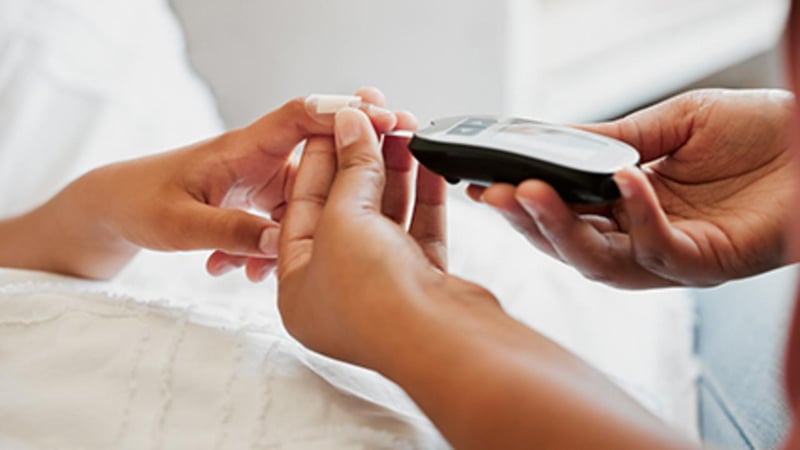Get Healthy!

- Amy Norton
- Posted November 8, 2022
Scientists Use 'Gentler' Cell Transplants to Reverse Diabetes in Mice
Scientists have used a transplant procedure to apparently cure diabetes in lab mice, without the need for immune-suppressing drugs afterward.
The success is a first step in developing a safer way to use cell transplants to possibly cure type 1 diabetes. But that's a long way off, researchers said -- and findings in mice often fail to translate to humans.
In type 1 diabetes, the body's immune system mistakenly attacks and destroys the pancreatic cells that make insulin -- a hormone that moves sugars from food into body cells to be used for energy. Without insulin, those cells would starve. So people with type 1 diabetes have to take synthetic insulin every day to live.
Even with that treatment, the disease makes it tough to maintain normal blood sugar levels. And in the long term, that can damage the body's blood vessels and nerves, leading to complications like heart, kidney and eye disease.
Researchers have long sought a way to cure type 1 diabetes by replacing the insulin-producing cells the immune system kills off.
In studies, patients have successfully received islet transplants from deceased donors that allow them to reduce or stop using insulin. Islets are clusters of pancreatic cells that include ones that produce insulin.
But there are some significant hurdles to making that a widely available approach, said Preksha Bhagchandani, an MD/PhD student at Stanford University who worked on the new study.
A main issue is that donor recipients have to take anti-rejection drugs to keep the immune system from killing the foreign cells. Those drugs can have numerous side effects, including an increased risk of infections.
There is a potential way to avoid post-transplant immune suppression: doing two transplants.
The first would involve blood stem cells from the donor. Those stem cells rise to the cells of the immune system, so the transplant would give the person with diabetes something of a "hybrid" immune system -- a mix of their own and the donor's. That new immune system should then be primed to tolerate the second transplant of islets from the same donor.
The difficulty there, Bhagchandani explained, is that the recipient has to endure a harsh conditioning regimen, including high-dose radiation and chemotherapy to knock out the existing immune system. It can cause infertility, and after the bone marrow transplant, there's a risk that the donor immune system will turn against the recipient's body tissue -- a life-threatening complication called graft-versus-host disease.
Since type 1 diabetes is a manageable chronic disease, Bhagchandani said, it's hard to justify such risks.
For the new study, published online Nov. 8 in the journal Cell Reports, she and her colleagues investigated a potential route around those issues.
It involves a "gentler" conditioning regimen to prepare the patient for the stem cell transplant: low-dose radiation and two antibodies that selectively target immune cells -- as opposed to chemotherapy, which exacts a wide-ranging toll on the body.
The antibodies essentially "clear space" for the donor stem cells to establish themselves and create a functional hybrid immune system, according to Bhagchandani.
The researchers found that the approach worked in lab mice with diabetes. After the gentler stem cell transplant, the animals were able to tolerate an islet transplant from the same donor. From there, their blood sugar levels eventually normalized, and the animals regained the weight they'd lost due to the disease.
The study lays the groundwork for more research, said Esther Latres, vice president of research at JDRF, a nonprofit that partly funded the work.
It "provides evidence toward a pathway to promote tolerance to transplanted islets without systemic immune suppression," Latres said in a Stanford news release.
Bhagchandani pointed to an additional aspect of the approach: The stem cell transplant may not only allow the immune system to tolerate the islet transplant -- but also to "reset' itself. That may prevent a repeat of the initial immune misfiring that caused the type 1 diabetes in the first place.
The next steps involve more research in lab mice, Bhagchandani said, and it could be several years before the tactic is ready for human testing.
"I don't want to oversell these findings," she stressed.
If the approach eventually proves safe and effective in human studies, there will also be real-world obstacles to overcome, Bhagchandani said. For one, it's difficult to procure islets from humans. So, the Stanford researchers will be studying more feasible sources of islets -- such as growing them in the lab from an initial small population of islet cells.
More information
JDRF has more on type 1 diabetes.
SOURCES: Preksha Bhagchandani, MD/PhD student, immunology, Stanford School of Medicine, Stanford, Calif.; Stanford Medicine, news release, Nov. 8, 2022; Cell Reports, Nov. 8, 2022, online![]()

